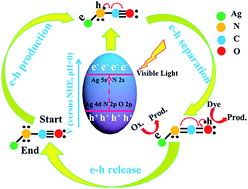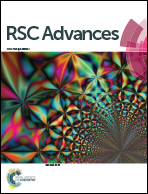A novel visible light-driven silver isocyanate photocatalyst: superior stability enhanced by intrinsic resonance effect†
Abstract
Silver isocyanate (AgNCO), a novel visible-light sensitive semiconductor photocatalyst, is prepared based on an intrinsic resonance effect strategy through a simple precipitation process. The as-prepared photocatalyst exhibits photocatalytic degradation ability under visible light. Importantly, it also shows excellent photocatalytic stability, which is a crucial problem to overcome in Ag-based photocatalysts. The existence of an intrinsic resonance effect and its crystal structure may be the main reasons for the superior photocatalytic stability of the AgNCO photocatalyst. The possible transferred and separated behavior of charge carriers and the reason for outstanding photocatalytic stability are illustrated in detail. This study develops a new design idea for exploiting stable Ag-based photocatalysts under visible light irradiation.



 Please wait while we load your content...
Please wait while we load your content...